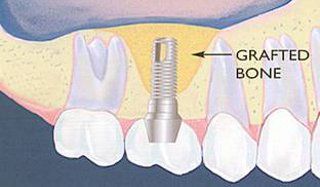Cincinnati's Best Dentist Explains Bone Graft Procedures

A bone graft is a routine and painless restorative dentistry procedure that you may require to maximize the outcome of a dental implant surgery. Restorative dentistry specialist Dr. Robert Petrtyl has been providing a wide variety of high-quality dental care services to Cincinnati residents for the past 35 years. If you're scheduled to have a bone graft or even if your dentist has only mentioned the possibility to you, Dr. Petrtyl wants to make sure that you understand the procedure completely.
When you have a tooth extraction, bone loss begins to occur in your jaw. A bone graft replaces this bone in order to get the jaw to start making new bone once again so your dentist can successfully install dental implants in your mouth. Today, bone grafting is most often a minimally invasive outpatient operation that consists of one or more of the following procedures:
- The Alveolar Ridge Preservation Graft or “Socket Graft”: Usually, it is not possible to place a dental implant immediately after a tooth extraction because the patient has a dental infection or there is a size discrepancy between the lost tooth and the replacement. A ridge graft fills the void left by the tooth extraction and holds the space while the natural bone has the opportunity to reproduce and fill the space with high-quality live bone. Depending on the size of the tooth removed, a ridge graft requires anywhere from three to six months before an implant can be placed.
- The Autogenous Ramus/Chin Graft or “Block Bone Graft”: Typically, a bone graft uses cow bone to replace bone that has atrophied due to tooth loss. However, sometimes this cannot adequately replace the missing bone, and it is necessary to revert to an older method of harvesting the patient's own bone (usually from the lower jaw bone or chin) to assist in bone growth. Generally, the graft will be given four months to heal before your dentist will check if it is strong enough to hold an implant.

- The Subantral Graft or “Sinus Lift Procedure”: Because of the sinus air cavities along the upper jaw, when a tooth is lost, very little bone typically remains in this area. This makes a dental implant in the back of the mouth trickier than along other areas of the jaw bone. The subantral graft works by lifting the sinus membrane above the roots of the back teeth to make room for a piece of cow bone. It takes six to nine months for the bone to form; however, depending on how much of your own bone remains during the graft, your dentist might be able to install your implants at the same time.
If you have questions about a tooth extraction, bone grafting operation, or any other restorative dentistry procedures, call Dr. Robert Petrtyl today at (513) 554-4657. You can also learn more about this Cincinnati dentist by visiting him online.
About the Business
Have a question? Ask the experts!
Send your question

